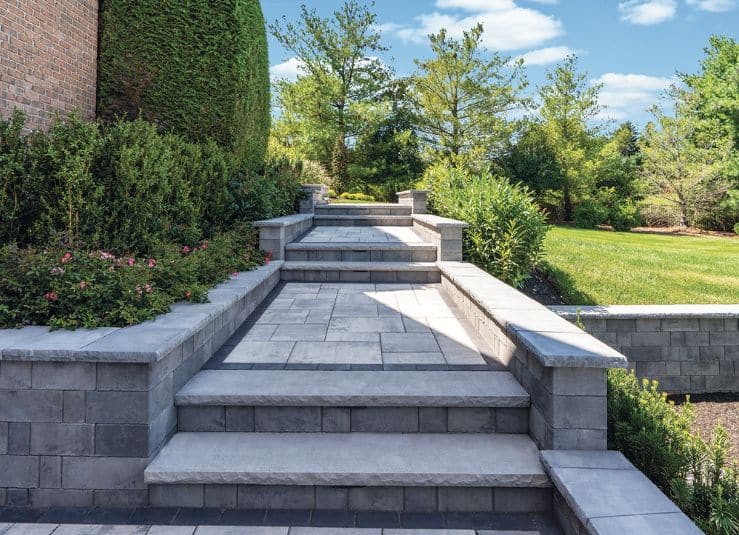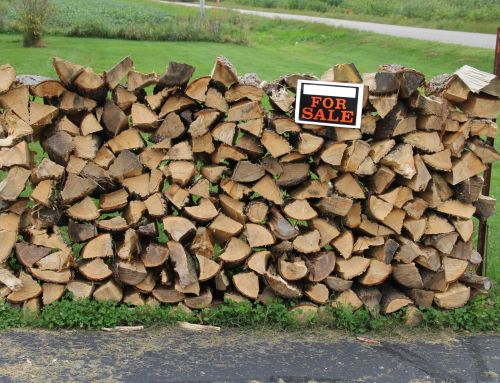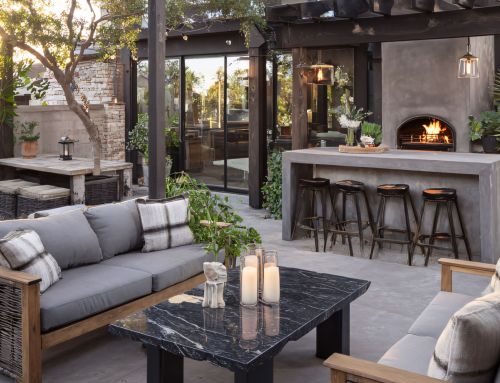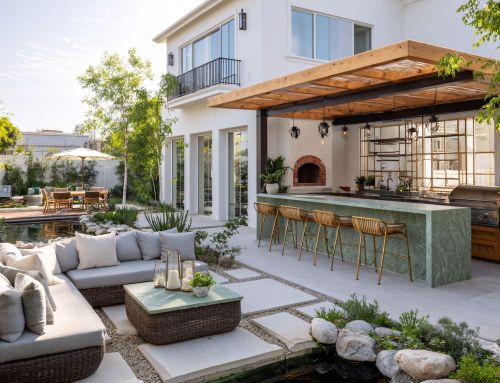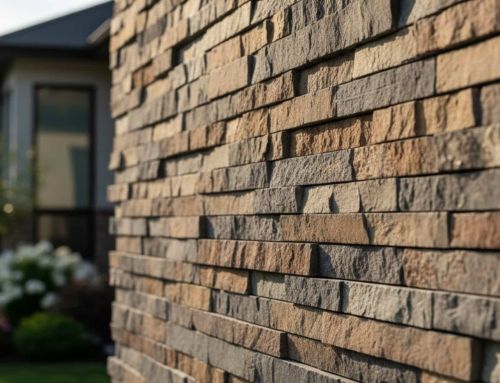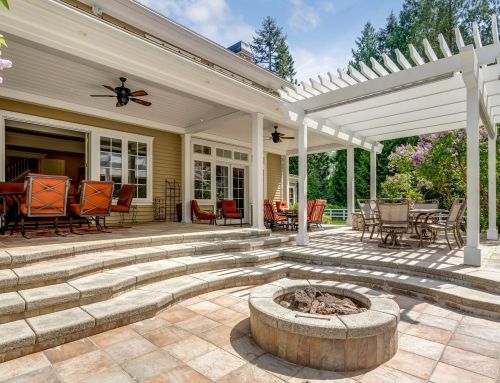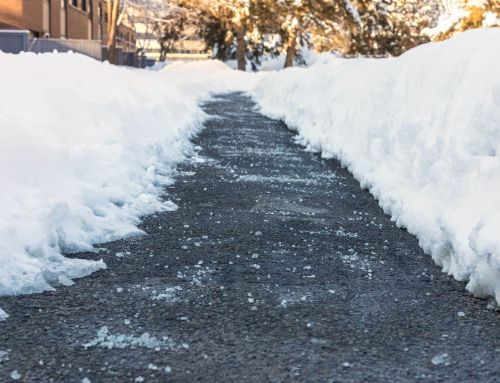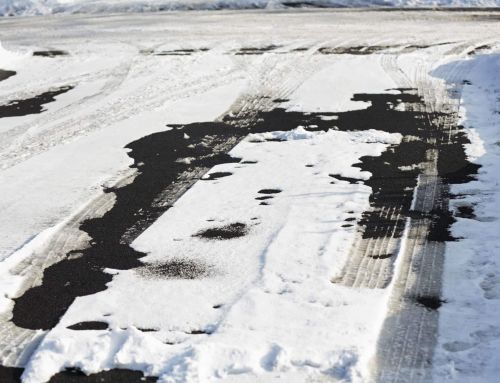Outdoor stairways do more than connect levels. They shape how you move through and enjoy your outdoor space. A well-designed staircase can improve safety, increase accessibility, and add visual interest to your landscape. With the right design, your stairs can seamlessly blend into the environment while enhancing the overall flow of your yard.
Whether you’re working with a steep yard, adding access to a raised deck, or building a standout entryway, knowing the basics of outdoor stair design can help you create a space that’s both practical and beautiful. The right stairway can also boost your home’s value and complement the overall look of your outdoor area.
What Are Outdoor Stairways and Why Do You Need Them?
Outdoor stairways serve as the crucial link between different levels of your property, but their purpose extends far beyond simple functionality. These structures are essential building elements that bridge elevation changes while maintaining the natural flow of your landscape design. Unlike their indoor counterparts, exterior stairs must withstand constant exposure to weather elements while providing safe, reliable access year-round.
The primary purpose of outdoor stairways is to create a safe passage between different elevations on your property. This might include connecting your main entrance to street level, providing access from a raised deck to your garden, or creating pathways through sloped terrain.
Common Types of Outdoor Stairways
- Traditional Deck Stairs: Straightforward design with standard risers and treads, ideal for connecting raised decks or patios to ground level.
- Garden Pathway Steps: Blend naturally into sloped landscapes with wide, shallow treads that follow the yard’s contours.
- Entryway Stairs: Create a welcoming first impression with broad treads and low risers that balance safety and style.
- Spiral Staircases: Compact and eye-catching, perfect for tight spaces or upper-level deck access.
Essential Design Factors for Your Outdoor Staircase
Proper planning is the foundation of any successful outdoor stairway project. The key to creating stairs that are both functional and beautiful lies in understanding the specific requirements of your space and how the stairway will be used.
Planning Your Stairway Design
Start by assessing your site’s elevation changes and traffic patterns. Consider who will be using the stairs most frequently – elderly family members, children, or pets may require special design considerations. The location of your stairs should provide the most direct and safe route while complementing your existing landscape design.
Integration with your existing hardscape elements is crucial. Your new stairway should feel like a natural extension of your outdoor space, not an afterthought. Consider how the stairs will connect with walkways, patios, and other outdoor features.
Critical Dimensions and Specifications
The dimensions of your outdoor stairs directly impact both safety and usability. Here are the key measurements to consider:
- Riser Height: Keep risers between 6-8 inches for optimal comfort and safety. Taller risers become difficult to navigate, especially for elderly users or those with mobility challenges.
- Tread Depth: Each tread should be at least 11 inches deep to provide adequate foot placement. Deeper treads are more comfortable and safer, particularly for outdoor use where weather conditions might affect footing.
- Step Width: Most building codes require a minimum width of 36 inches, but wider stairs feel more welcoming and allow for easier passage of multiple people.
- Handrails: Required for stairs with more than three risers, handrails should be installed 34-38 inches above the tread surface.
Safety and Accessibility Features
Safety should be your top priority when designing outdoor stairs. Non-slip treads are essential, especially in areas that experience wet weather or freeze-thaw cycles. Options include textured concrete, rubber inserts, or specially treated surfaces that provide better grip.
Proper lighting is crucial for nighttime safety. Consider integrating lighting into your stair design from the beginning rather than adding it as an afterthought. LED strip lights under tread lips or recessed riser lights can provide subtle but effective illumination.
Choosing the Right Materials for Your Outdoor Stairs
The material you choose for your outdoor stairway will significantly impact both the initial cost and long-term maintenance requirements. Each option offers distinct advantages and considerations.
Concrete Stairways
Concrete is a popular material for outdoor stairs thanks to its strength, longevity, and ability to handle all types of weather. With modern techniques, concrete can be customized in texture, color, and finish to match a wide range of home styles, making it both practical and visually appealing.
It offers several benefits like durability, low maintenance, and cost-effectiveness for large projects. However, it does come with a few considerations. Concrete requires professional installation, offers limited flexibility once set, and can crack in freeze-thaw climates without proper sealing.
Natural Stone Stairways
Stone stairs provide timeless beauty and exceptional durability, making them a premium choice for outdoor landscapes. Materials like granite, limestone, bluestone, and fieldstone bring natural texture and character to any setting while blending seamlessly with the environment.
They’re weather-resistant, low-maintenance, and add significant value to your property. However, stone stairs come with a higher upfront cost, require skilled installation, and may need sealing depending on the stone type. Without the right finish, they can also become slippery when wet.
Metal Stairways
Steel and aluminum stairs bring a sleek, modern look to outdoor spaces while offering strong, lightweight performance. Galvanized steel delivers superior strength, while aluminum resists rust and is easier to handle, making both options ideal for quick installations.
These materials are cost-effective, customizable with powder coating, and well-suited for contemporary designs. On the downside, they can heat up in direct sun, require occasional maintenance, and may not suit more traditional architectural styles.
Wood Stairways
Wood stairs can add warmth and charm to your outdoor space, but they come with high maintenance needs. Pressure-treated lumber is the most common option, yet even with treatment, wood is vulnerable to weather and wear over time.
Wood stairs require yearly sealing, are prone to cracking and splintering, and can be slippery when wet. They typically don’t last as long as stone, concrete, or metal, making them a higher-maintenance, shorter-term solution that will eventually need replacing.
Building Codes and Professional Installation
Most outdoor stairway projects require building permits and must comply with local building codes. These regulations exist to ensure safety and structural integrity.
Understanding Code Requirements
Building codes typically specify minimum requirements for:
- Step dimensions and uniformity
- Handrail height and strength
- Landing sizes and placement
- Load-bearing capacity
- Drainage requirements
Working with a professional contractor ensures code compliance and proper installation. They understand local requirements and can navigate the permit process efficiently.
Professional vs. DIY Installation
While basic wooden steps may seem like a manageable DIY task, most outdoor stair projects call for professional installation. Materials like concrete, stone, and even metal require expert handling to ensure proper support, safety, and long-term performance.
Hiring a professional ensures your stairs meet local codes, have the right foundation and drainage, and come with warranty protection. It also saves time, reduces costly mistakes, and gives you access to high-quality materials and expert craftsmanship.
Lighting Your Outdoor Stairway
Proper lighting transforms outdoor stairs from a daytime-only feature to a safe, usable element around the clock. Good stair lighting enhances safety while adding aesthetic appeal to your landscape.
Essential Lighting Types
- Riser Lighting: Small recessed lights installed in the vertical face of each step provide subtle illumination that clearly defines each tread. These lights typically use 10-15 lumens – enough to guide safely without being overly bright.
- Tread Lighting: LED strip lights installed under the lip of each tread create a floating effect while clearly marking each step. This approach hides the light source while providing excellent visibility.
- Post and Rail Lighting: If your stairs include handrails, consider integrating lights into the posts or rails. Cap lights on posts can provide broader illumination while maintaining aesthetic appeal.
Installation Considerations
Planning lighting during the design phase is much easier and more cost-effective than retrofitting existing stairs. However, professional installers can add lighting to existing concrete or stone stairs using specialized drilling techniques.
Solar-powered options are available for areas without electrical access, though they may not provide consistent illumination year-round. Low-voltage LED systems offer the best combination of safety, efficiency, and reliability.
Maintenance and Long-Term Care
Different materials require different maintenance approaches, but all outdoor stairs benefit from regular inspection and care.
Seasonal Maintenance Tasks
- Spring: Inspect for winter damage, clean thoroughly, and address any drainage issues. Check handrails and lighting systems for proper operation.
- Summer: Deep clean stairs and apply protective treatments as needed. Trim vegetation that might obstruct the stairway.
- Fall: Remove leaves and debris promptly to prevent staining and slip hazards. Prepare drainage systems for winter weather.
- Winter: Keep stairs clear of ice and snow. Use appropriate de-icing products that won’t damage your chosen material.
Material-Specific Care
- Concrete: Seal every 2-3 years and repair small cracks promptly to prevent water infiltration and freeze damage.
- Stone: Some stones require periodic sealing, while others are naturally weather-resistant. Clean with appropriate products for your specific stone type.
- Metal: Inspect for rust or coating damage annually. Touch up paint or protective coatings as needed.
Cost Considerations and Budgeting
Understanding the full cost of your outdoor stairway helps you plan wisely and avoid surprises. Material prices range from $50–100 per step for wood, $75–150 for metal, $100–200 for concrete, and $150–400 for natural stone. Professional installation can add 50–100% to those costs, depending on site conditions and complexity.
While upfront costs vary, well-designed stairs can boost your property value by 5–10% and enhance safety and usability. Investing in durable, low-maintenance materials may cost more initially, but often saves money in the long run.
Conclusion
Designing and building an outdoor stairway involves more than just choosing steps. It’s about creating a safe, functional, and visually appealing pathway that complements your landscape. From material selection to code compliance and lighting, every detail plays a role in the final outcome. With the right planning and professional support, your stairway can enhance accessibility, boost curb appeal, and add long-term value to your property.
Ready to bring your outdoor stairway project to life? Visit Old Station Outdoor & Landscape Supply for expert advice, premium materials like natural stone, concrete, and lighting solutions, and everything you need to build stairs that last. Whether you’re a contractor or a homeowner, our team is here to help you find the perfect products to match your design and budget. Stop by our Norton showroom or contact us today to get started.
FAQs
What is an outdoor stairway called?
Outdoor stairways are commonly called exterior stairs, outdoor steps, or landscape stairs, depending on their specific use and design. They may also be referred to as garden steps, patio stairs, or deck stairs when describing their specific location or function, and these structures can enhance your outdoor life by providing a safe way to explore different levels of your property.
Which staircase is best for an outside house?
Concrete and natural stone staircases are typically best for outdoor use due to their durability, weather resistance, and low maintenance requirements. The specific choice depends on your budget, climate, and home’s architectural style.
What is the difference between stairs and stairways?
“Stairs” refers to the individual steps themselves, while “stairway” refers to the complete structure, including the steps, handrails, and surrounding framework. The terms are often used interchangeably in casual conversation.
Can a stairwell be outside?
Yes, stairwells can be located outside, particularly in multi-story buildings, fire escapes, or exterior access designs. Outdoor stairwells require special weatherproofing and drainage considerations to ensure safety and durability.

